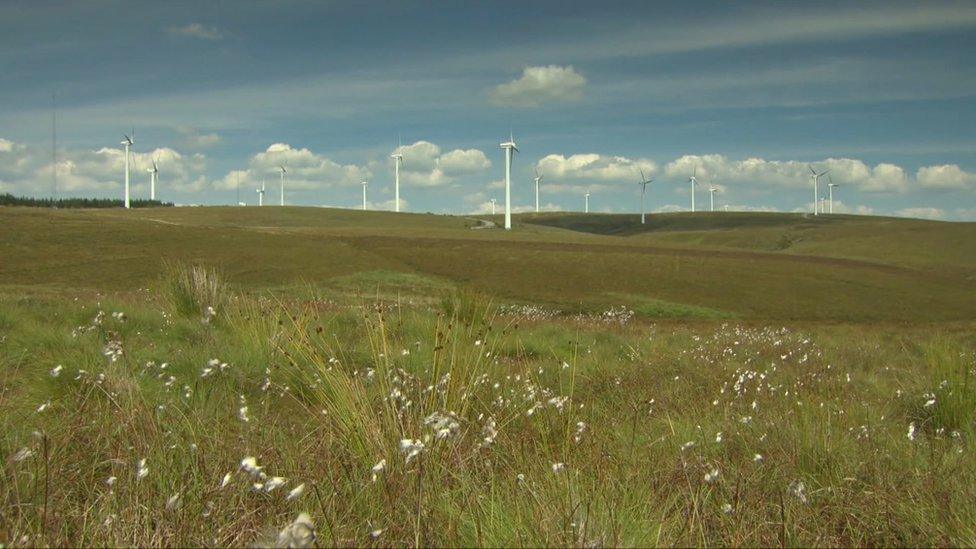Storm Dudley's winds 'met 90% of NI electricity needs'
- Published
- comments
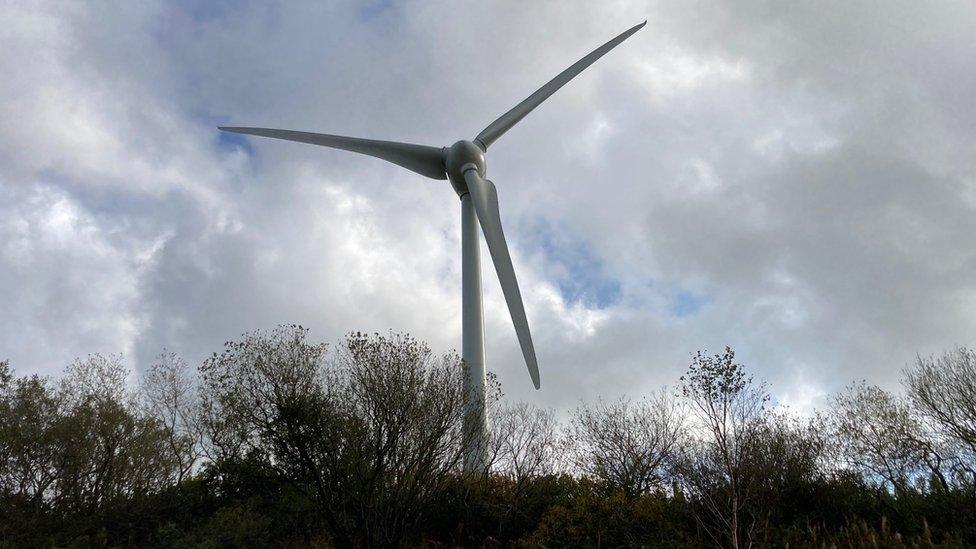
Every cloud has a silver lining and in the case of Storm Dudley it was wind.
At one stage on Wednesday morning, the wind was generating enough electricity to meet almost all of Northern Ireland's energy needs, with some left over.
SONI is the company that operates the electricity grid in Northern Ireland.
Its managing director Alan Campbell said it had "just over 1000 megawatts of wind connected to the grid at about 11:00 BST".
"That was nearly 90% of Northern Ireland's energy needs at that point in time, and at the same time we were exporting additional power across to Scotland and down to the south as well, so it's been a real good start to the year," said Mr Campbell.

Alan Campbell says Storm Dudley made up for a milder 2021
Northern Ireland usually has wind in abundance, providing a plentiful renewable resource for generating power.
Most of the wind energy is generated in the west, then transported east where the greater demand is.
But 2021 was unusual as there were days when the wind didn't blow at all - Alan Campbell said 2022 is making up for it.
"We're integrating huge amounts of wind on to the system," he said.

Strong winds posed challenges for people in Belfast city centre
"We've seen three new records set over recent weeks for the amount of wind, renewables, energy, that we've been connecting on to the grid.
"So it's been excellent in this early part of the year."
Wind forms the bulk of Northern Ireland's renewable energy supply, but the grid can only absorb a certain amount of that, although it is increasing.
"We've gone from about 40% maybe back in 2010 at any one point in time, to at the moment we can handle 75%," said Mr Campbell.
"So that's taken huge innovation on our part, but also a lot of collaboration across industry as well to actually get that wind developed, get it connected to the grid and now actually seeing it being used by our consumers across Northern Ireland."
Wind driving policy
Under the Department for the Economy's Pathway to Net Zero energy strategy, wind power is key to reducing emissions in Northern Ireland.
It sets a target of 70% of energy coming from renewable sources by 2030.
Renewables - wind and solar energy for example - already account for almost half the electricity generated here.
"We look at this as, we're at the halfway point on that 70% journey. At this stage, we've done over 40% on a year-by-year basis," he said.
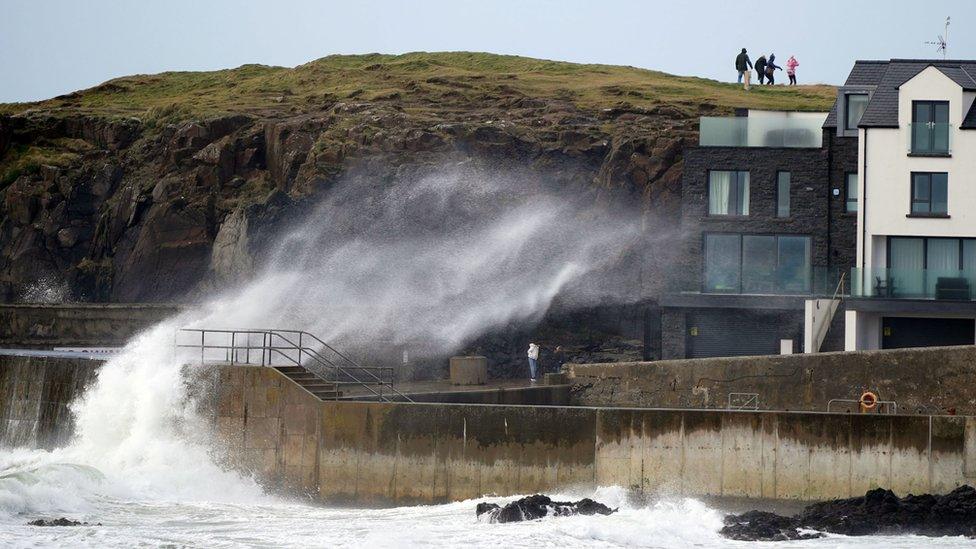
Storm Dudley's winds drove waves against the Portstewart sea wall
"To get to 70%, we need to see diversification, so we're looking at potential for offshore wind as well as onshore wind - more batteries, long-term storage batteries - as well as diversifying our fuel mix.
"We do see gas as being a key fuel moving forward, to balance those times whenever the wind isn't blowing and the sun's not shining."
Wind power used to be stored in hydro-electric dams, but nowadays it is kept in large-scale batteries.
There are two battery units in Mid-Ulster, permanently connected to the grid.
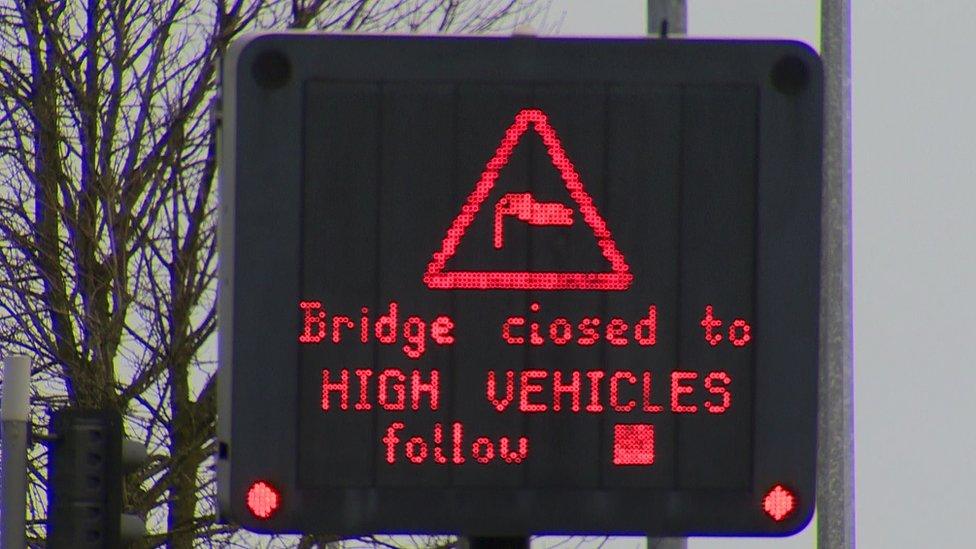
There were precautions taken in Londonderry
So could sufficient, modern battery storage and better transport - overhead wires - to move the power across Northern Ireland help wipe out fossil fuel completely?
Alan is cautious but said: "There's every possibility of that.
"There will be those times when the wind and sun aren't blowing and not shining, so we'll need to make sure we have that storage capability, the clean gas fuels for example that we'll need to be able to power our needs whenever that's the case.
"We're seeing that starting now already, and there's great ambition set out by the Energy Strategy.
"We're looking forward to playing our part in that."
Related topics
- Published17 February 2022
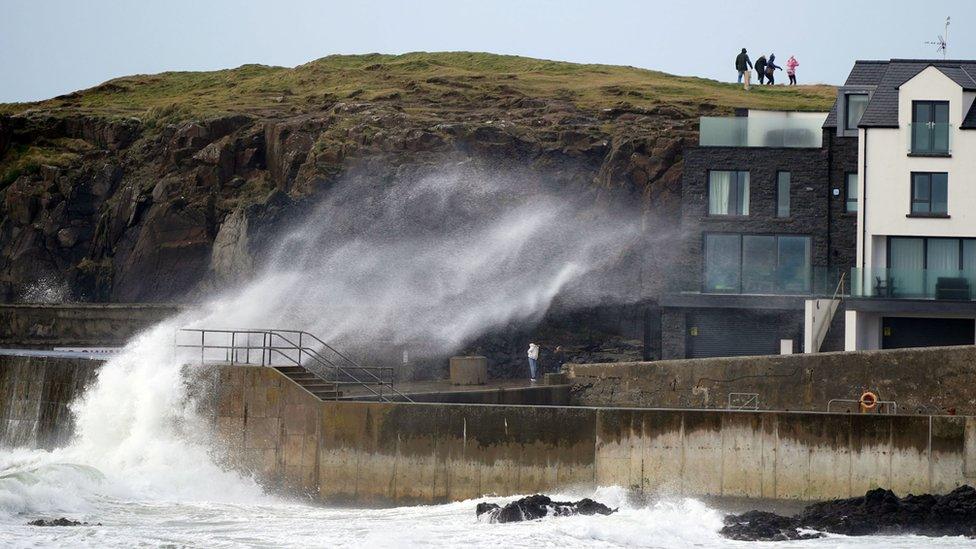
- Published12 November 2021
